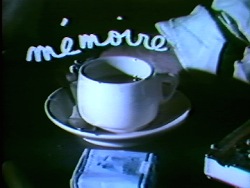Jean-Luc Godard
French filmmaker Jean-Luc Godard is one of the essential figures in modern cinema. Throughout an extraordinary career that began with his 1959 New Wave masterpiece Breathless, Godard has continued to be one of the most original, controversial, and influential figures in contemporary film.
In 1976, Godard began collaborating with filmmaker Anne-Marie Miéville on a series of radically innovative works for broadcast on European television — works that Colin MacCabe termed "probably the most profound and beautiful material ever produced for television." Displaying the rigorous intellect and irreverent wit that characterize Godard's films, these richly experimental works break new ground both as video and as television.
While mass media images recur throughout Godard's films, it was only after 1968 and his break with traditional cinematic production and distribution systems that he began focusing specifically on television and video as subject and medium. In 1972, in a deliberate departure from the commercial filmmaking industry, Godard and Miéville established the alternative production and distribution company Sonimage, based in Grenoble. Through Sonimage, Godard produced a number of pivotal films, including Numéro deux (1975) and Sauve qui peut (la vie) (1980), which are marked by formal and thematic innovations, including the use of video. During this time Godard and Miéville began producing their collaborative work for European television, including two major series, Six fois deux/Sur et sous la communication (1976) and France/tour/détour/deux/enfants (1978).
Analyzing the significance (and signification) of the mass media apparatus in relation to family, labor, communication and the individual, Godard and Miéville use television to critique the ideology of the production and consumption of media images in contemporary French society. At once lyrical and theoretical, highly structured and improvisational, these complex video essays articulate a compelling discourse on the personal and social implications of mass cultural images television, cinema, advertising, photojournalism.
Godard and Miéville's provocative social analyses focus on the media's effect on everyday life. Their critical inquiries into the politics of contemporary communications subvert the conventions of television and reinvest them with new meaning. Utilizing a televisual language for their investigations, Godard and Miéville employ precise formal devices — slow motion, the extended take, a fixed camera, on-screen text and intertextual collages of photographic, cinematic, and television images. The documentary format and the direct interview are applied (and subverted) throughout. Focusing on the theoretical, the philosophical, and the quotidian, these works are largely devoid of professional actors; their "subjects" are ordinary French people: school children, workers, Godard and Miéville themselves.
The filmmakers' presence, their constant questioning of the creative, enunciative and collaborative process in which they are involved, disrupts the documentary structure with a radical subjectivity. The directness and intimacy of the medium allow them to use video as a journal or sketchbook, as in Scénario du Film Passion (1982) — in which Godard ruminates on the labor and love that inform the cinematic and creative process — and Soft and Hard (1985), where their home is the site for an intensely personal discourse on work, life and imagemaking.
Resonating with an idiosyncratic brilliance, Godard and Miéville's works for television are among the major accomplishments in the medium. Godard has continued to produce programs for European television, including a major ongoing project entitled Histoire(s) du cinéma.








